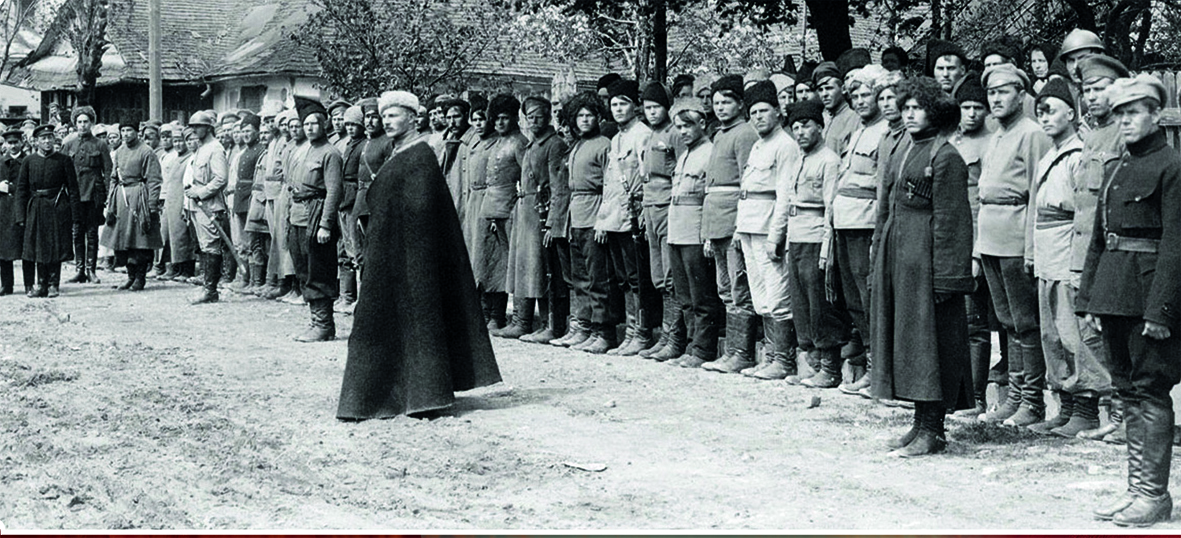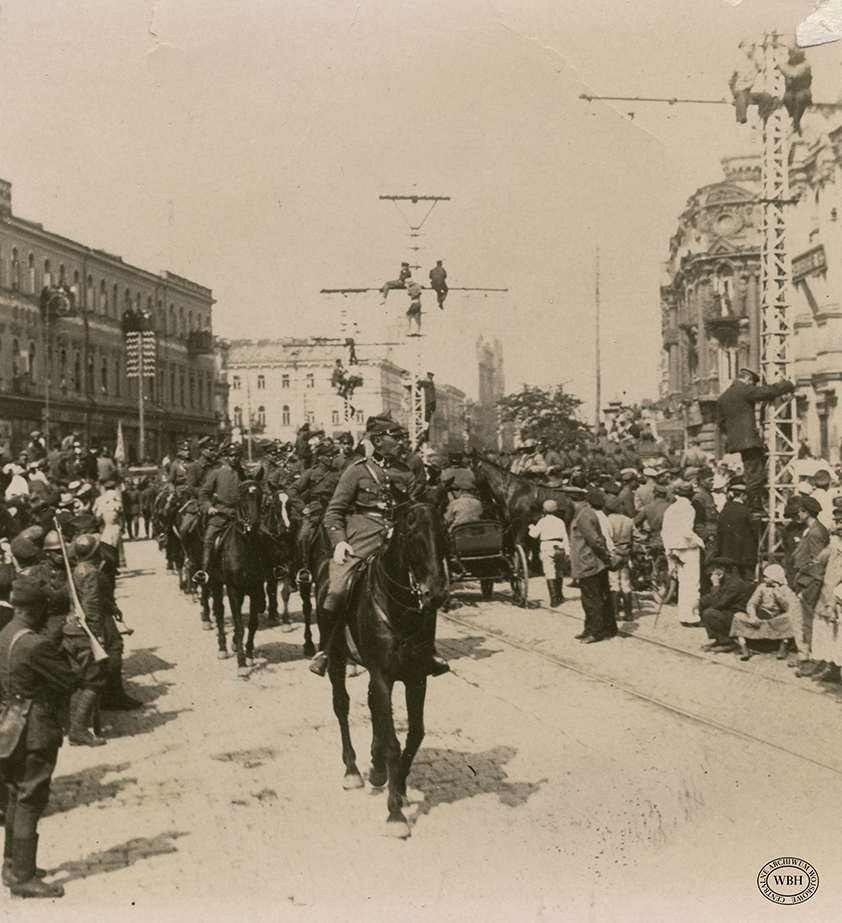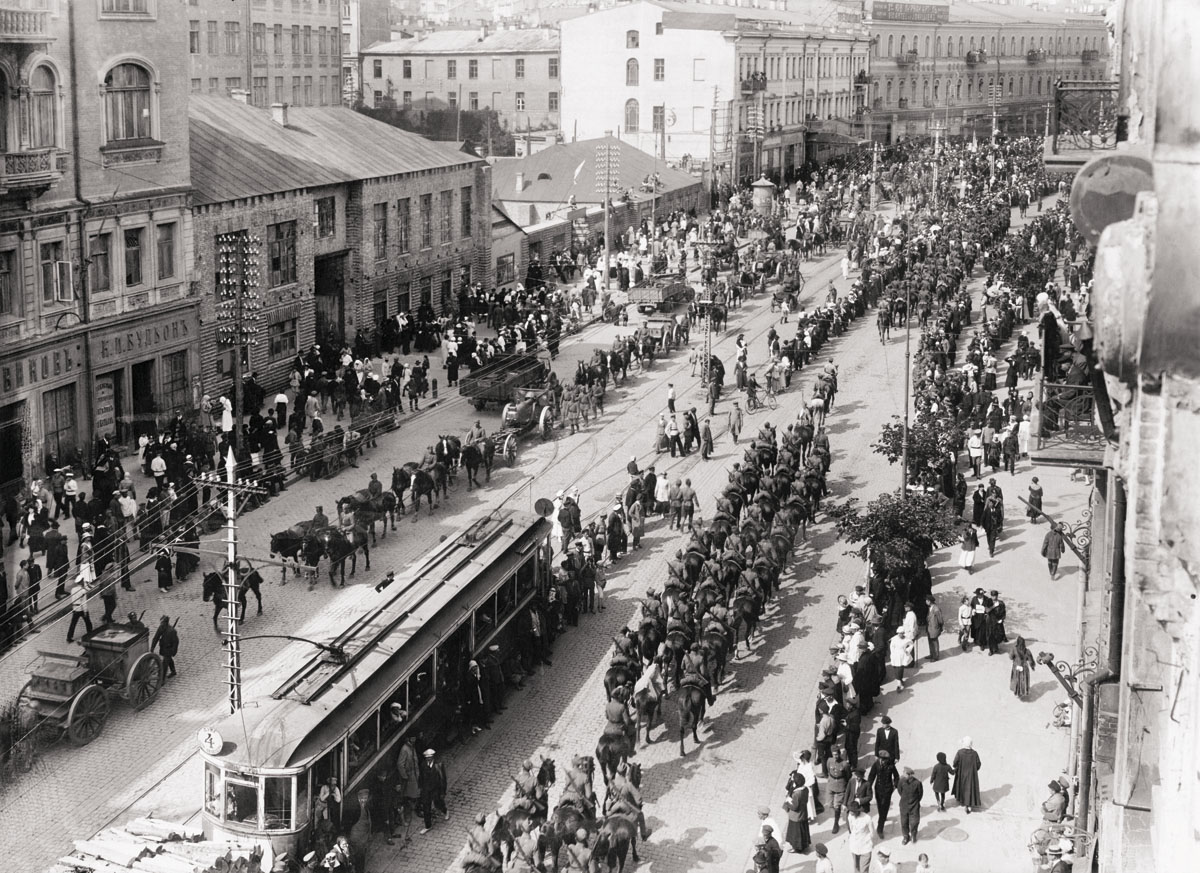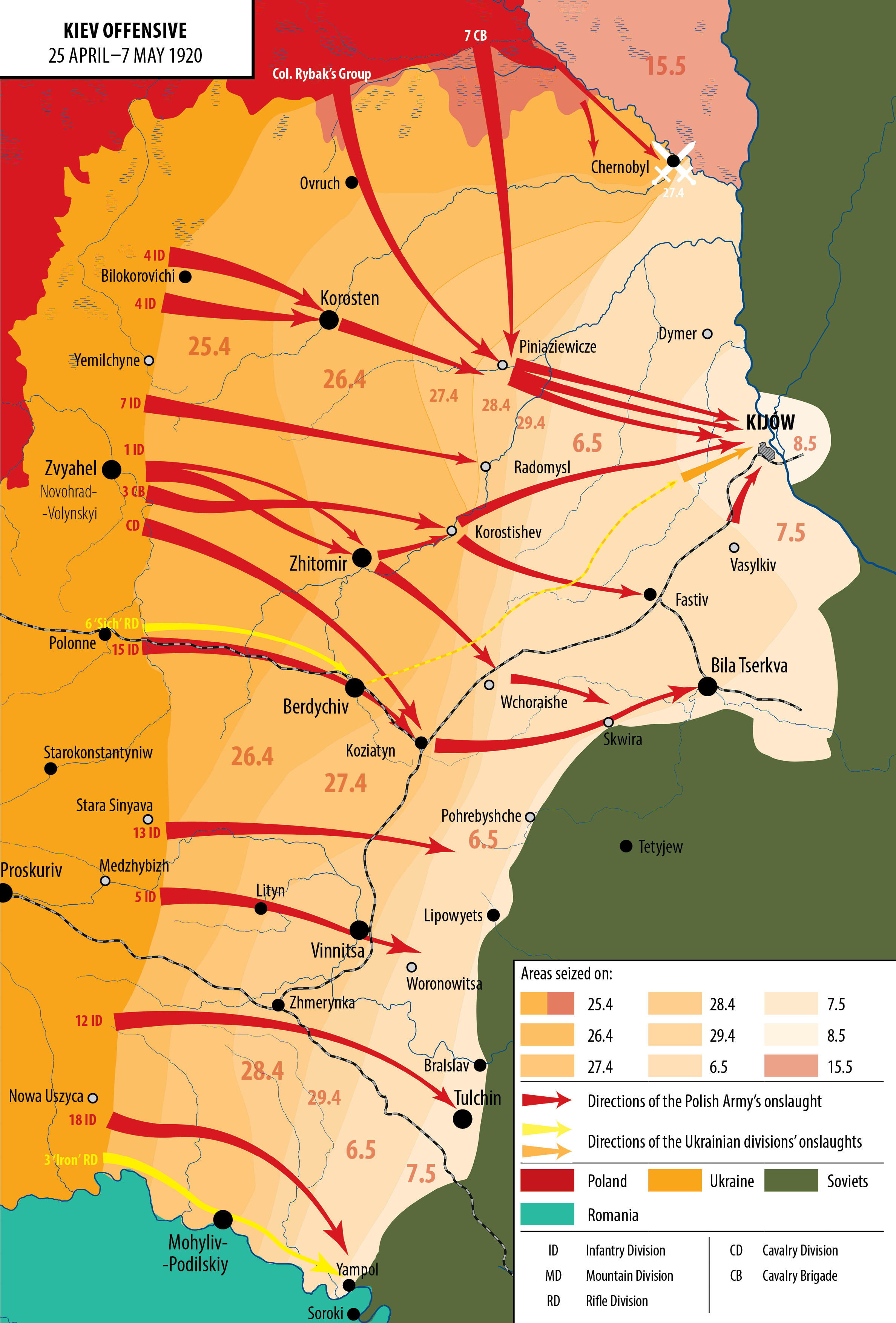

Lunched on 25 April 1920, the Kiev Offensive was personally commanded by Józef Piłsudski. Between the Pripyat River and the Dniester River it was to crush the southern concentration of the Bolshevik troops before the arrival of reinforcements from the interior of Russia and their reaching combat readiness to strike in the west. The allied forces consisted of approx. 60,000 Polish soldiers and approx. 4,000 Ukrainian ones. Early May saw the liberation of strategically located towns in Podolia: Vinnytsia and Zhmerynka (with major artillery storehouses, food storehouses, military hospitals, and rolling stock), where the locals enthusiastically welcomed the arriving troops. Vinnytsia, a town on the River Boh, was selected as the interim capital of the Ukrainian Soviet Socialist Republic.



